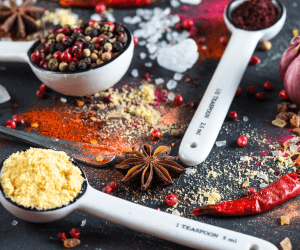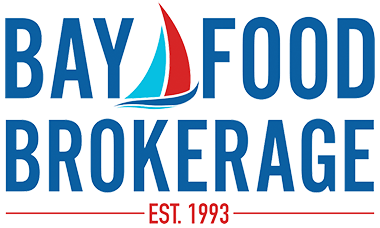
Grocery Store Trends Every Food Manufacturer Should Know in 2024
As we head further into 2024, the landscape of grocery stores continues to evolve, with new trends emerging constantly. For food manufacturers, it is crucial to be informed and adapt to these grocery store trends in order to stay relevant and meet the changing demands of consumers.
Why manufacturers need to understand grocery store trends
By understanding the latest grocery store industry trends, food manufacturers can anticipate shopper preferences and adjust their product offerings accordingly.
“Keeping a pulse on these trends will help manufacturers stay competitive and empower them to drive innovation in the food industry,” said Bay Food Brokerage Vice President of Sales Gary Royal. “It’s also critical that our team at Bay Food stays on top of the latest grocery store trends. This helps us be the best partners possible to our manufacturer clients.”
Based on information recently reported by our data and analytics partner SPINS, here are five trends in grocery stores to keep an eye on in 2024.
1. Personal values influence shoppers’ behavior
According to SPINS’s 2024 Trend Predictions Report, 49% of consumers today are values-oriented shoppers. Of those, 8 in 10 stated that the following are personally important to them:
- Animal welfare
- Environmental welfare
- Labor/worker welfare
- Ingredient sourcing
“Many of today’s shoppers have moved past being primarily focused on foods that are good for their own health,” Gary said. “Now, they’re also looking for products that are good for animals, people and the planet.”
This grocery store trend is important for manufacturers to keep in mind during product development. That way, manufacturers can strategically select where they source ingredients, and how and where production takes place.
In addition, manufacturers must make it easy for grocery shoppers to recognize these values-oriented product attributes. For example, consider obtaining and displaying designations, such as:
Also, manufacturers can implement best practices when it comes to product packaging. For example, display values-oriented attributes on the front of products, not the back, and on a side of the package.
2. Decreasing everyday pricing and increasing promotions
U.S. consumers still cite food prices as their number-one economic concern, despite prices being in a period of long-term stabilization. In fact, while inflation was and still is top-of-mind for many consumers, Consumer Price Index data suggests that inflationary pressure is coming down.
In recent timeframes, base ARP – also known as “everyday pricing” – is decreasing across the grocery department.
In addition, promotional volume of products sold at grocery retail stores has increased. In 2023 alone, brands spent $18 billion more on promotions than in the previous year. We expect this trend to continue.
“Manufacturers should take this trend into account when planning their pricing and promotional strategies,” Gary said. “There may be opportunities to leverage price reductions for true unit sales growth.”
Brands and retailers can test a combination of pricing strategies to discover what meets their respective goals. Tactics could include:
- Temporary price reductions (at least 5% less than the base price)
- Features (retailer print ads and coupons, in-store flyers, etc.)
- Displays (secondary selling locations, such as endcaps)
- A combination of the above
3. Increased interest in foods from around the world
 Data shows that U.S. grocery shoppers are becoming increasingly more adventurous when it comes to buying foods from around the globe. This is ushering in a new wave of taste profiles and beverage formats from various cultures.
Data shows that U.S. grocery shoppers are becoming increasingly more adventurous when it comes to buying foods from around the globe. This is ushering in a new wave of taste profiles and beverage formats from various cultures.
Interestingly, products with the following international attributes had the largest percentage growth in sales over $100 million from December 2022 to December 2023*:
- Tunisia: 65%
- Korea: 49%
- Colombia: 27%
- Iceland: 25%
- Canada: 25%
Even product categories showing meager growth overall may experience more significant growth among international product segments. For example, in 2023, the annual growth in total olive sales was 4%. Meanwhile, sales of Castelvetrano olives, which come from Italy, grew 11%.*
“This trend signals to manufactures potential opportunities to innovate in their existing product categories, or possibly expand into new categories,” Gary said. “Some international foods have been mainstreamed in the U.S., like sushi. But there are plenty of other types of international cuisines and ingredients American consumers are eager to try.”
4. A new wave in women’s health products
 Women’s health has faced a multitude of headwinds. However, recent federal attention is spotlighting the need for products formulated for the health and wellness of women. As such, we expect to see an evolution of products on grocery store shelves that cater specifically to women and their case-specific issues.
Women’s health has faced a multitude of headwinds. However, recent federal attention is spotlighting the need for products formulated for the health and wellness of women. As such, we expect to see an evolution of products on grocery store shelves that cater specifically to women and their case-specific issues.
Here are a few examples of data supporting this:
- A greater demand for female case-specific products, which has contributed to a decline in non-specific multivitamins
- Vitamins, minerals and supplements for teen female products significantly outpacing that of non-specific teen VMS products
- Significant increase in sales of supplements that support women’s mood, menstrual cycle, menopause and motherhood
In addition, women’s sports nutrition is currently underrepresented. Only 3% of sports nutrition products are specifically for women, and most are for weight loss and fat burn. So, in 2024, we expect to see greater diversity and functionality in women’s sports nutrition.
“From pre- to post-workout, more women’s sports nutrition products are being formulated with whole foods and functional ingredients related to women’s health,” Gary said. “Manufacturers planning to enter or grow in this space should consider their opportunities to target female shoppers.”
5. Proceed cautiously with trends reaching their peak
According to SPIN’s 2024 Trend Predictions Report, data shows several trends may be reaching their peak. These include:
- CBD
- Melatonin
- Candyceuticals (such as gummy vitamins)
- Plant-based alternatives
- Cauliflower (as a gluten-free carb substitute)
“This doesn’t mean that categories and products aligned with these trends aren’t still alive and well,” Gary said. “It simply means that we see the perhaps explosive growth they once had beginning to plateau. Manufacturers looking to introduce products that follow these trends should consider the specifics around why these are slowing down. There may be opportunities to pivot or innovate according to consumers’ latest buying habits.”
How can a broker help manufacturers leverage grocery store trends?
As we head into 2024 and consider predictions in grocery shopper behavior, you may be wondering how a broker can help manufacturers navigate the evolving landscape.
Simply put, the right grocery broker partner can help food manufacturers make wise decisions when looking ahead to the future of grocery retailers.
To start, ideally, the broker will have access to data that provides factual information and sound predictions in grocery store trends.
For instance, at Bay Food, we partner with SPINS, a leading provider of big data and analytics for the natural, organic and specialty products industry. This data offers insight into:
- Up-and-coming categories
- How clients’ products are performing compared to competitors
- Predictions as to where the grocery industry is headed
Often, even with access to data, it can be hard to interpret what the data really means. So, we also use an artificial intelligence (AI) platform that is instrumental in telling our team what the data is saying.
“Manufacturers should stay on top of trends for future innovation,” Gary said. “As a leading grocery broker working with the major retailers in the Southeast, we help guide our clients for long-term success.”
Looking for a broker partner to help you leverage the latest grocery industry trends? Contact us today to learn how we can serve you.
*Source: SPINS Satori. 52 Weeks ending 12.3.2023. Total US- MULO + Natural Channel. Total F&B
